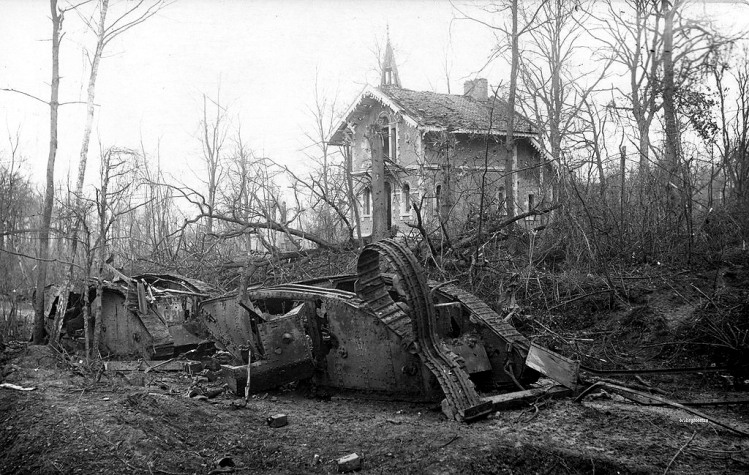Private Thomas Grady, 241963, King's Own Yorkshire Light Infantry, 2nd/5th Battalion
Thomas Grady was born in Chester in the September quarter of 1892, the son of Thomas Grady and Hannah Dickson, nee Dodds, who later married in 1900 in Chester. 20 year-old Hannah had first married 21 year-old clerk William Bennett Dickson at Hawarden, Flintshire, Wales on the 5th November 1876. At some stage they either separated or divorced. William B. Dickson died aged 72 in Wandsworth, London in 1927.
By 1901, Hannah Grady, now a widow, was living in Battyeford, Mirfield with her sons: William Ellis Dickson (21); Albert Dickson (19), James Dickson (17), John McHenry Dickson (15), Thomas Grady (8) and a daughter Edith Grady (6).
In 1911, Thomas Grady, now aged 18 years and working as a miner, was lodging with the Wright family at Charles Street, Horbury Junction. He later lived at 24 Albert Street, South Ossett with his mother Hannah and sister Edith Grady.
On the 3rd October 1913, Thomas Grady was sentenced to one year's hard labour at Wakefield Prison for "Attempted carnal knowledge of Alice Buckley, a girl under the age of 13 years, on the 27th September 1913".
In fact, Alice Buckley was just 7 years of age, and Grady's sister Edith and half brother Albert Dickson were lodging at Ranters Fold, Horbury with the Buckley family at that time. Thomas Grady had also previously been fined for gaming.
Because Thomas Grady was working as a coal miner, a reserved occupation during WW1, he was exempt from conscription, but because of his conviction and the shame he brought on his family, it is likely that he joined the British Army to try and make amends.
Thomas Grady first joined the King's Own Yorkshire Light Infantry as Private 5040, and was later assigned as 241963, King's Own Yorkshire Light Infantry, in the 2nd/5th Battalion.
The 2/5th was formed at Doncaster on September 10th 1914 as a second line unit. On the 1st March 1915 the battalion moved to Bulwell in Nottingham and was attached to 187th Brigade in the 62nd (2nd West Riding) Division. They moved again in April 1915 to Strensall Camp in York, and in May to Beverley, going on in November to Gateshead, January 1916 to Larkhill and June 1916 to Flixton Park near Bungay Suffolk. Finally they moved again in October 1916 to Wellingborough and landed at Le Havre, France on the 15th January 1917. On the 2nd February 1918, the 2nd/5th Battalion was absorbed into the 1st/5th Battalion.
Bourlon Wood was attacked on the 23rd November 1917 by infantry and tanks trying to get right through the wood to Bourlon village on the other side. By this time many of the tanks were almost worn out and their crews weary, so composite companies were formed from tanks that were still going. The 62nd (2nd West Riding) Division was back in Bourlon Wood on 27th November 1917 for another attempt to complete its capture.

Above: Destroyed British tanks overturned and in pieces across from the "Shooting Box" in Bourlon Wood during the Battle of Cambrai, November 1917.
Bourlon Wood was a hunting reserve, comprising dense undergrowth amongst the trees separated by rides, or tracks, passing through the wood in all directions. The French came here to shoot the game birds and somewhere near the centre was an ornate hunting lodge, known as the "Shooting Box" to the British Army. The wood was quite heavily defended by the Germans. The British captured it towards the end of the battle although it was always a difficult place to fight in, with men and guns easily able to hide in the undergrowth.
On the 27th November 1917, 187 Brigade led on the left at 06.20 with 16 of the remaining tanks to take Bourlon Village. 2/5th KOYLI and 2/5th York & Lancasters followed 11 tanks of F Battalion, Tank Corps. Four tanks and a KOYLI company were to cover the left flank by dealing with machine gun posts in the Marcoing Line.
It was dark and snowing: the infantry had difficulty keeping up with the creeping barrage and when the tanks and infantry entered Bourlon they found the village a network of formidable defences hardly touched by the shellfire. The flanking party lost its direction and failed, so that the rest of the battalion was badly hit by enfilade fire from the left.
After two hours' fighting the battalion was driven out of Bourlon. It was relieved at the end of the day. The division had however succeeded in taking the last of Bourlon Ridge, which had been fought over for a week. The exhausted West Riding division was then relieved (under a hail of German gas shells) before the German counter-attack took back all the hard-won ground a few days later.
It was in this action at Bourlon Wood that 25 year-old Private Thomas Grady was to lose his life and on the 27th November 1917, he was reported as wounded and missing. His body was never recovered, but he is remembered on Panel 8 of the Cambrai Memorial, Louverval, France.
The small village of Louverval is on the north side of the D930, Bapaume to Cambrai road, 13 kilometres north-east of Bapaume and 16 kilometres south-west of Cambrai. The Memorial stands on a terrace in Louverval Military Cemetery, which is situated on the north side of the D930, south of Louverval village. CWGC signposts on the D930 give advance warning of arrival at the Cemetery.
Although Thomas Grady lived in Ossett for some of his life, he was never remembered on the Ossett War Memorial. It is hoped this omission will be rectified in the future.
Sadly, Thomas Grady's army records have not survived and it is not known what medals he was awarded or when he first joined the British Army. His mother was awarded a pension of 12/6d a week from the 6th August 1918. She died in 1932.
References: